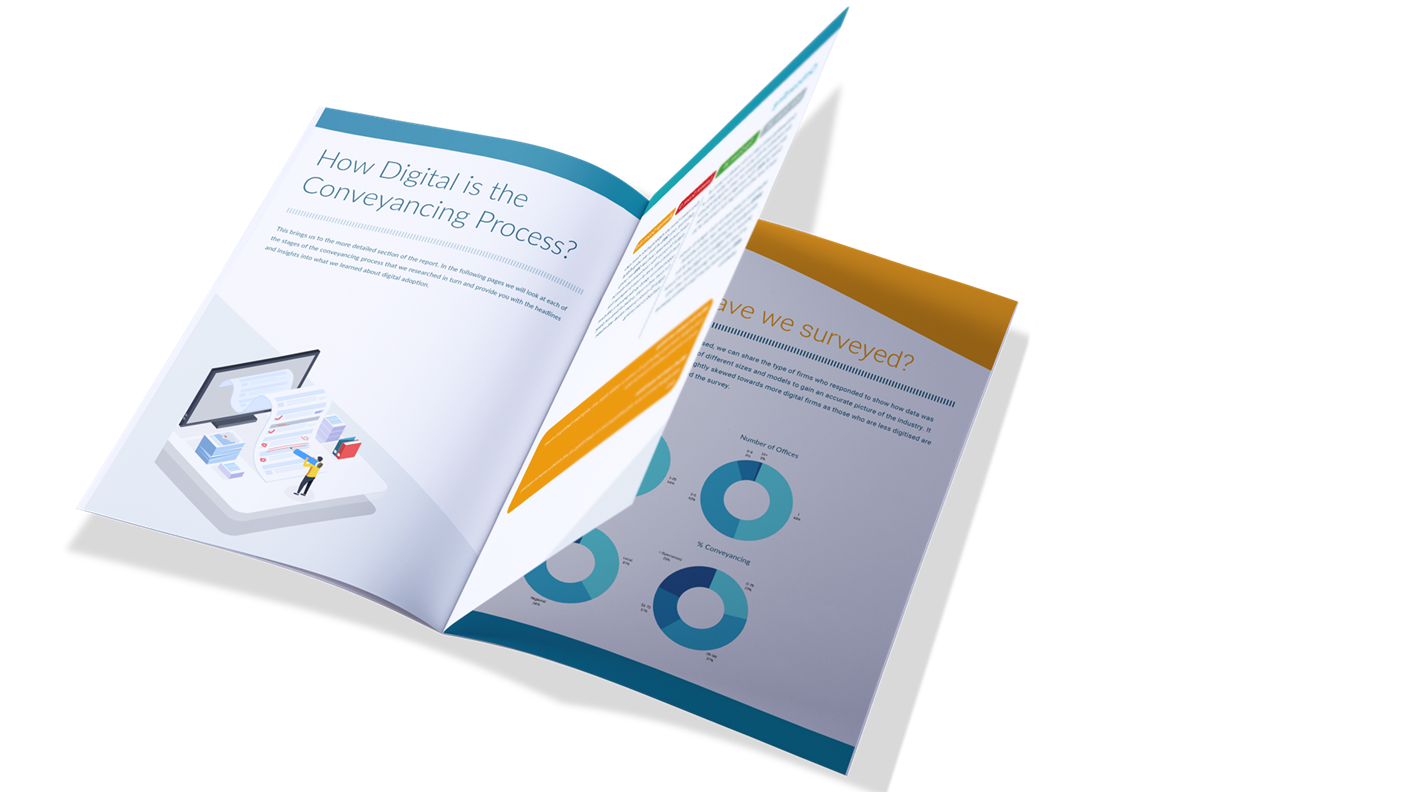If there was an A Level in using digital conveyancing tools there wouldn’t be too many firms that would be happy with their grades. With an average digital conveyancing maturity score across the industry of 43%, there’s still plenty of room for opportunity within firms when it comes to leveraging technology.
Just 5% of law firms scored above 80% when assessed for their digital maturity in the conveyancing process according to the Digital Conveyancing Maturity Index. These firms are reaping the rewards of putting digital front and centre of their operations.
This group are the early adopters, and they are essential for the evolution of the industry, as they set the pace with which others then race to keep up. Legal has traditionally lagged a few years behind other industries when it comes to the adoption of digitisation, but there are firms who are taking tech by the reins. Law firms which are adopting digital tools are accessing benefits their peers are not; time-savings, productivity, and better risk mitigation.
The solutions these leading firms are adopting span the entire conveyancing process from new business management and client onboarding to post-completion. Running ahead of the curve, they’re already leaps and bounds ahead, giving the rest of the industry the confidence to implement the same digital technologies that are really driving the future of end-to-end digital conveyancing.
So, what are the key takeaways we can learn from these digital pioneers? Based on the Digital Conveyancing Maturity Index, here are five digital solutions that we’ve learned the most digitally savvy law firms are using to their benefit.

1. Integrating their case management system
To score the absolute maximum possible marks throughout most areas assessed in the Index, firms must integrate their various conveyancing service providers with their case management system. We’re not talking about a simple link through from the CMS to the service provider either.
We’re looking at two-way integration that pushes and pulls data between various digital tools. Pre-populated information helps to avoid re-keying data to save time and minimise risk while the centralisation of data creates a single source of truth. The top-performing firms in the Index are already doing this, so if you aren’t making the most of CMS integration, it’s a great way to improve and reap the benefits of technology adoption across the conveyancing process.
2. Automation is extremely valuable
It may not come as a surprise that the pre-completion process is the area where companies are least mature across the board, with the average score across respondents reaching just 30% - the lowest performing area across the entire conveyancing process. The thing about pre-completion is that it’s the largest and most labour-intensive part of the process, so it presents one of the biggest opportunities for technology adoption in conveyancing.
What are the leaders doing? They are making use of automation. Automation of administrative tasks and pre-population can all have a major impact on law firm productivity by saving firms hours on time-consuming processes, and freeing up fee-earning staff to work on higher-value tasks.
So where exactly are they using automation in the conveyancing process? The three most common areas for automation within law firms are:
- Automating how their clients receive key stage updates. Using client portals or apps, law firms who are more digitally mature are keeping ahead of clients chasing for updates, which frees up more of their time to focus on progressing the transaction and managing new business.
- Automating the creation of reports on title by using technology to gather and populate the necessary information to be included. This is helping firms save time, minimise the risk of errors, and ensures their clients are reliably informed about the property they are purchasing.
- Automating their lender updates. More than two thirds of firms who have automated their lender updates with lender panels scored in the top 50% of respondents. It’s keeping lenders updated quickly and ensures the transaction can keep moving without needing to manually check and update the information within the matter.
3. eSignatures are a quick win
78% of firms are already using eSignatures, though not evenly across the entire process. They are most commonly adopted for client care letters (69%). Things are rather different however when it comes to Land Registry and Mortgage deeds, used by just 16% and 11% of firms respectively.
Tech-savvy firms are using eSignatures wherever possible across most of the conveyancing process. With HM Land Registry announcing in July 2020 that they were accepting eSignatures, and Nationwide following suit more recently, there’s now an increasing number of reasons to adopt them within your firm.
So how should you go about making full use of eSignatures in your conveyancing process?
- If you’re already using eSignatures for part of the process, ensure you’re using them for Land Registry and mortgage deeds, not just onboarding.
- If you’re not using them at all, eSignatures are one of the quickest ways to incorporate digitisation into your conveyancing process and you’ll see the rewards swiftly.
4. Dashboards provide improved visibility
Knowing what your firm has on the go and what stage of the process each matter is at is easily managed and monitored through dashboards. From onboarding to post-completion, understanding what the lay of the land looks like at any given time is a huge benefit. Additionally, the added visibility means that key dates are never missed, and clients slow to in complete their onboarding can be quickly identified and followed up.
22% of respondents in the Digital Conveyancing Maturity Index are taking advantage of the visibility provided by digital dashboards, which is aiding their compliance and risk management as well as helping firms stay on top of their caseloads.
5. Digital onboarding is a must for modern movers
The pandemic changed how most law firms managed their client onboarding process. Processes involving manual ID checks with passports dropped into offices and printed bank statements were replaced with online ID verification and Source of Funds checks.
Having seen the benefit of these digital services, most firms have kept them in place, with 66% now completing their client ID verification digitally and 40% using Open Banking solutions. Firms aren’t limited to just digitising part of the onboarding process though: The entire process can be managed, including digital TA forms, client care packs, and onboarding questionnaires.
With the majority of first-time buyers made up of tech-native Millennials and soon-to-be homebuyers from Gen Z, the expectation for convenient, accessible technology to be onboarded continues to grow. To keep up with client demand, firms need to implement digital client onboarding software into their conveyancing process. The bonus is that this technology can be used for other areas of law too, so it makes sense to get started sooner rather than later if you’re not already using it.

Get your free digital conveyancing maturity assessment
We’ve learned that end-to-end digital conveyancing is a reality and it’s available to law firms now.
You can download the complete Digital Conveyancing Maturity Index report here. To get your free digital conveyancing assessment, complete the short survey that takes less than 10 minutes, and you'll receive a personalised report on your firm’s digital capabilities when it comes to conveyancing.




About the author
Digital Conveyancing Summit
The Digital Conveyancing Summit provides conveyancers with a hub of leading-edge sector knowledge all packed in informative and comprehensive articles and interviews, offering guidance, best practice and food for thought around how technology can help us work smarter.